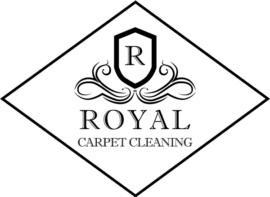An Oriental rug is a beautiful addition to your home. Unfortunately, these famously plush rugs can be difficult to clean. Their dense fibers trap dirt, dander, and grime that dull their color. Over time, they may develop a musty or unpleasant odor?
How can you effectively clean your rug? Is there a special trick to vacuuming it? (Hint: Yes.) Is baking soda safe on Oriental rugs? (Hint: Not at all.)
Read on to learn how to thoroughly and safely clean an Oriental carpet.
Can I use a carpet cleaner on an Oriental rug?
Oriental carpets, including Persian rugs, are typically made from fine silk or wool. These delicate materials are highly susceptible to staining, fading, and other damage. Many store-bought carpet cleaning products will be too harsh for your Oriental carpet. Some alkaline formulas will actually remove the vegetable dyes that give your rug its brilliant color. Obviously, you want to avoid that! The dyes are so volatile that even warm water can make them “bleed,” causing your rug to fade.
However, a gentle acidic-based cleanser (with a pH of about 5.5) can work on Oriental rugs. Always check the label as well as your rug’s care instructions. When in doubt, opt for vinegar — or leave it up to carpet cleaning professionals.
Can Oriental carpets be steam cleaned?
No. Steam cleaners use “hot water extraction,” which pushes high-pressure jets of hot water into the fibers and then sucks them back up. Both these elements can damage your rugs.
The hot water “activates” your Oriental carpet’s vegetable dyes and causes them to bleed. Steam-cleaning will definitely fade your rug.
The delicate fibers are easily torn, so forceful blasts of water will damage your rug. For the same reason, you shouldn’t power-wash an Oriental rug, either.
How often should you clean Oriental rugs?
Aim to vacuum your Oriental carpet at least twice a month. Once every two weeks is a good cadence. The less dirt and grime allowed to linger in the fibers, the longer your rug will last. Regular vacuuming will make your deep-cleaning easier.
If something spills on your rug, clean it up immediately. Avoid carpet cleaners unless they are specifically designed for wool (i.e. acid-based without harsh surfactants). Some rugs can’t tolerate any detergents — always check the care label! Never use enzyme cleaners or baking soda on your Oriental rug.
Then, gently blot the stain (never scrub). comb out as much of the dirt or grime as possible with a soft carpet brush.
Once you’re done, dry your rug thoroughly.
You should deep-clean your Oriental rug every year. You can hire carpet-cleaning professionals for this time-intensive task, or try to do it yourself.
How do you clean an Oriental carpet at home?
Vacuuming is your best bet for regular maintenance of your Oriental carpet. Just be sure to turn off the brush roller, as the bristles can damage the fibers. Ideally, you’ll use the nozzle brush attachment. Always vacuum in the same direction of the grain.
For particularly delicate Oriental rugs, you may want to place down nylon mesh. Anchor it with books or bricks, then vacuum over the mesh.
Every so often, you will want to wash the rug. This takes some space and a lot of water, so be prepared to invest some time in this chore!
- Begin by taking your rug outside. Beat out as much dust as possible.
- Then, mix water with your cleaner. Remember: alkaline-based cleaners will ruin your Oriental rug’s colors. Opt for an acidic cleaner, diluted with cool water. White vinegar is always a good choice.
- Pour the vinegar solution over the rug.
- Begin combing out dirt and grime. Rigid brushes and scrubbers are too harsh for your rug’s delicate fibers. Instead, use a carpet brush with long, soft bristles. Stroke the rug rather than scrubbing it. Work in one direction (with the grain) as though you were petting a cat.
- Rinse the carpet with cold water, then use a gentle squeeze or flat rake to push out excess water.
- Then, hang your rug to dry. Don’t rely on evaporation (and never put it in direct sunlight). A combination of powerful fans and wet/dry vacuum (without bristles) often does the trick.
Ideally, you do this task on a warm, dry day. Harsh sun can “bleach” your rug’s colors, while excess humidity will delay your rug’s drying time. The last thing you want is for the rug to remain damp.
With care, you can thoroughly clean your Oriental rug yourself. If you don’t have the space or time, though, or if the weather won’t cooperate, it’s best to call in the professional carpet cleaners.
When should Oriental rugs be professionally cleaned?
If your Oriental rug has lingering odors or seems to be packed with dirt and grime, it might need more care than you can do at home. Filthy carpets require intense shaking and rinsing — and let’s face it, Oriental rugs are heavy!
Professional Oriental-rug cleaners often have proprietary acid-based cleaning formulas. Heavy-duty rolling brushes and rakes release and expel dust and grease trapped in the fibers. Then, they blast your rug with dryers to ensure no moisture is left behind.
This process is elaborate and sometimes pricey, but it’s well worth it if you don’t have the means or energy to deep-clean your Oriental carpet. And as these rugs can last for centuries, professional cleaning is an investment in an heirloom. Even if you do most of the cleaning yourself, an occasional pro-level treatment can prolong your Oriental rug’s life.
Ready to give your Oriental or Persian rug some TLC? Reach out to Royal Carpet Cleaning.
